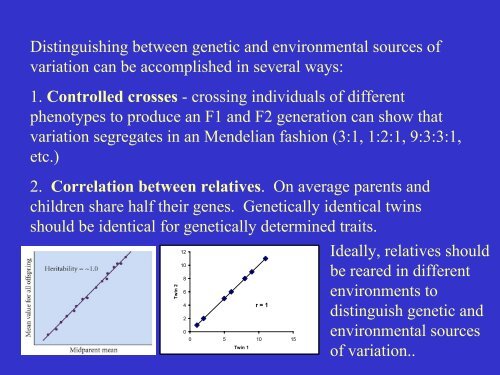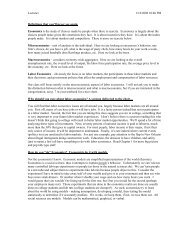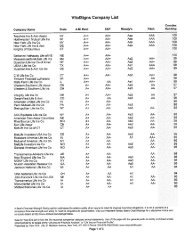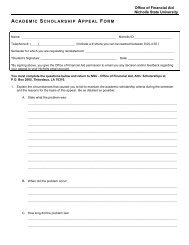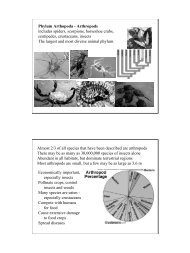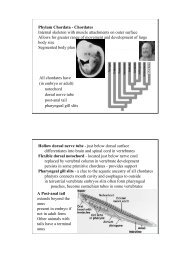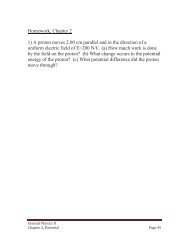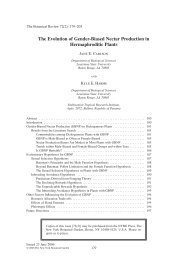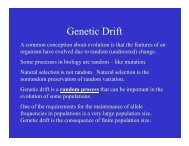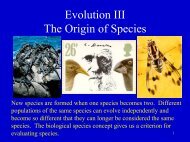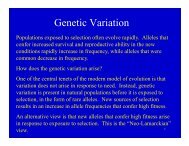Variation in Populations.pdf
Variation in Populations.pdf
Variation in Populations.pdf
You also want an ePaper? Increase the reach of your titles
YUMPU automatically turns print PDFs into web optimized ePapers that Google loves.
Dist<strong>in</strong>guish<strong>in</strong>g between genetic and environmental sources of<br />
variation can be accomplished <strong>in</strong> several ways:<br />
1. Controlled crosses - cross<strong>in</strong>g <strong>in</strong>dividuals of different<br />
phenotypes to produce an F1 and F2 generation can show that<br />
variation segregates <strong>in</strong> an Mendelian fashion (3:1, 1:2:1, 9:3:3:1,<br />
etc.)<br />
2. Correlation between relatives. On average parents and<br />
children share half their genes. Genetically identical tw<strong>in</strong>s<br />
should be identical for genetically determ<strong>in</strong>ed traits.<br />
12<br />
Ideally, relatives should<br />
10<br />
be reared <strong>in</strong> different<br />
8<br />
6<br />
environments to<br />
4<br />
r = 1<br />
dist<strong>in</strong>guish genetic and<br />
2<br />
0<br />
environmental sources<br />
0 5 10 15<br />
Tw<strong>in</strong> 1<br />
of variation..<br />
Tw<strong>in</strong> 2


